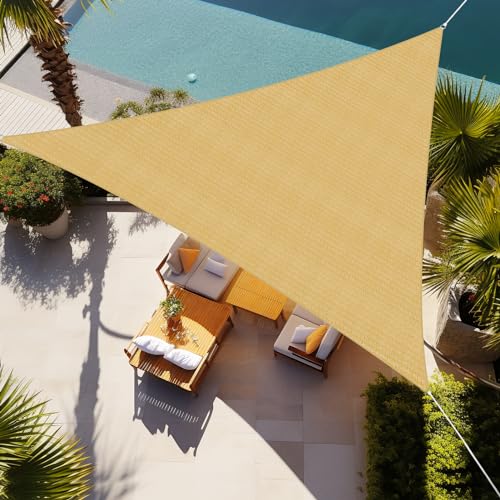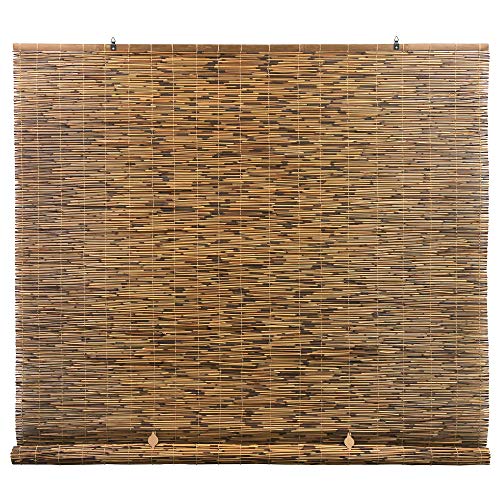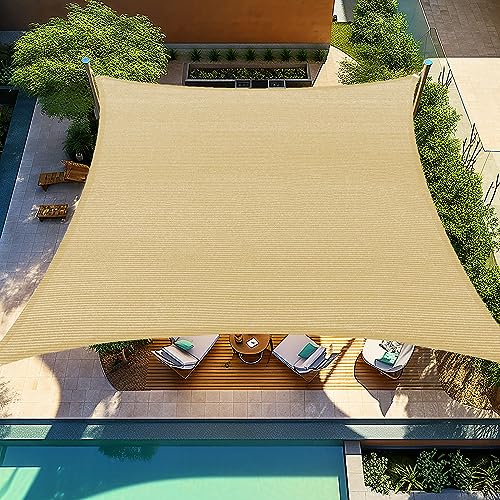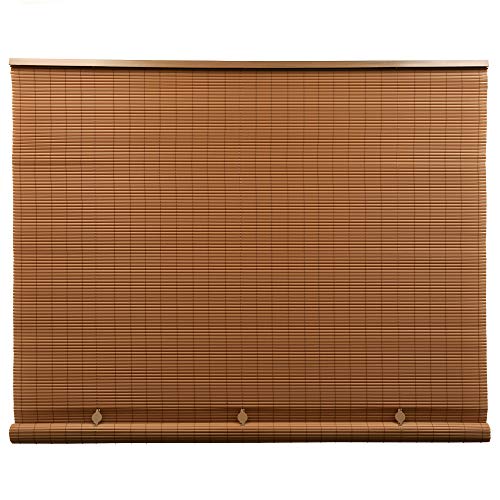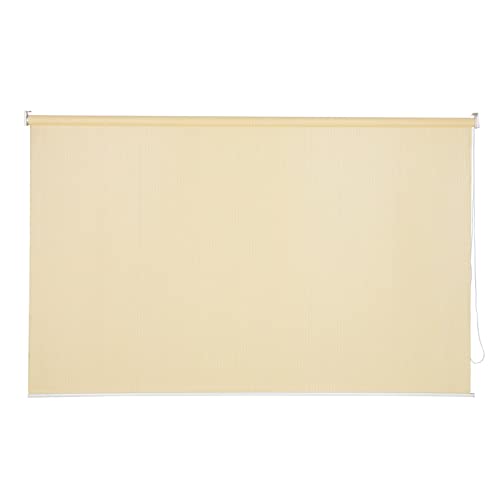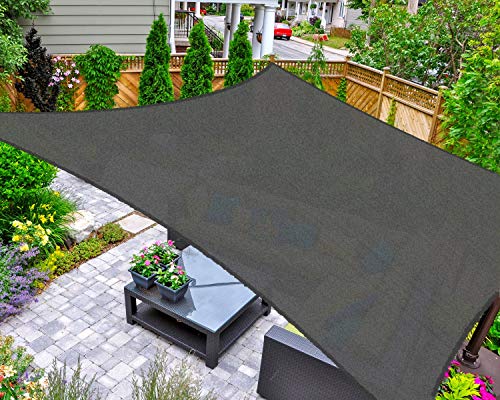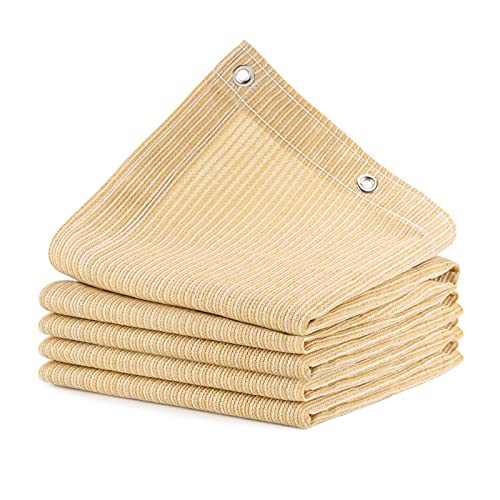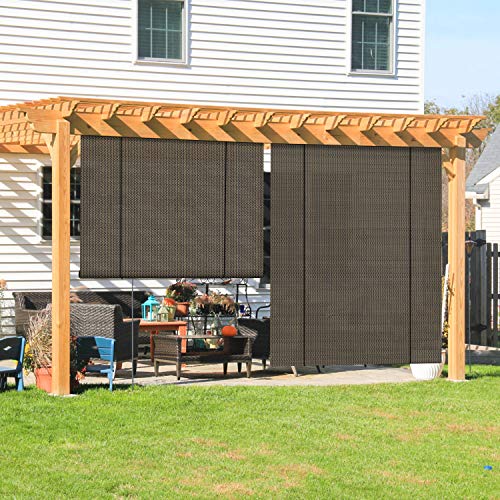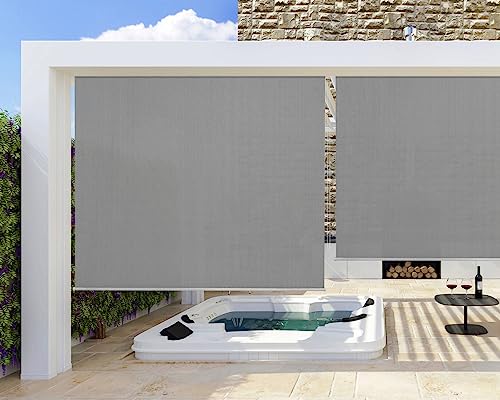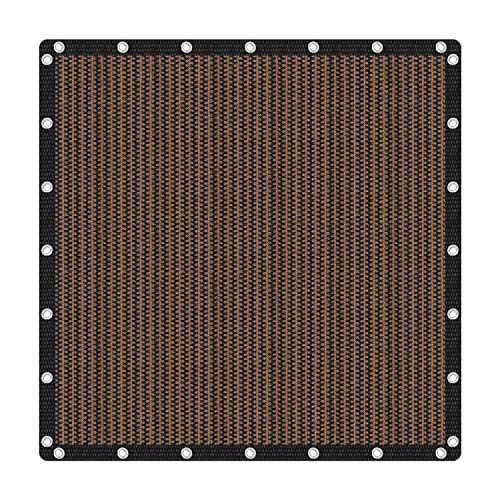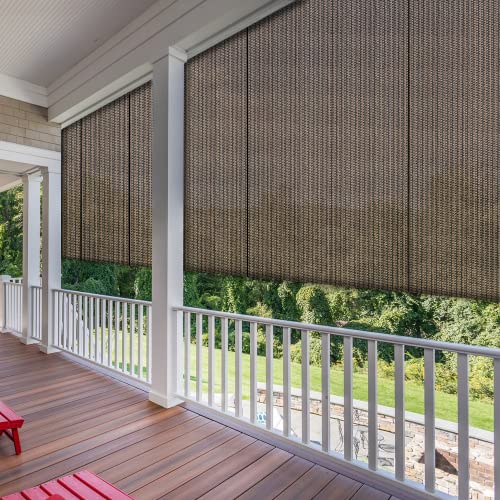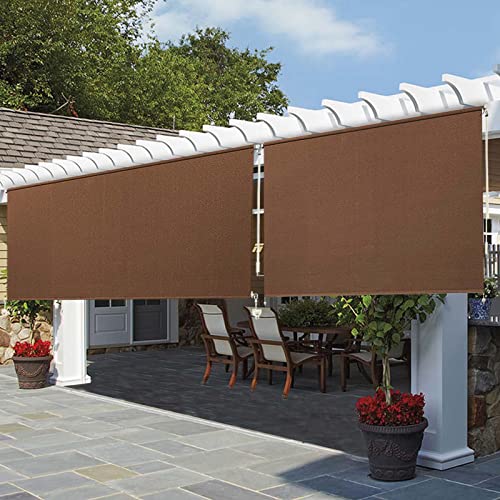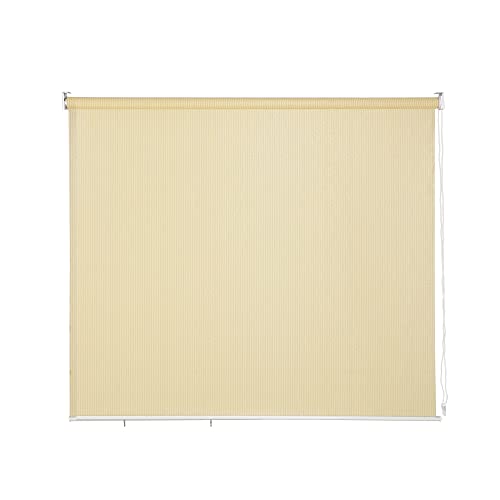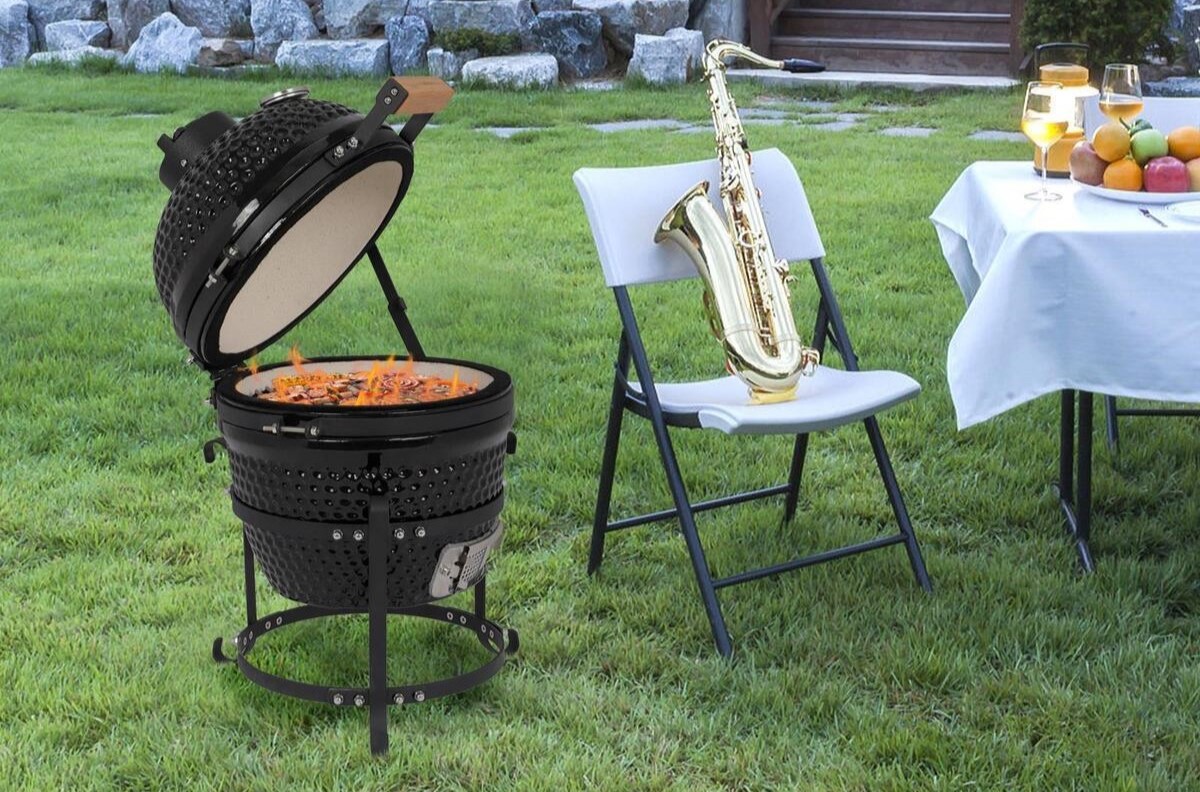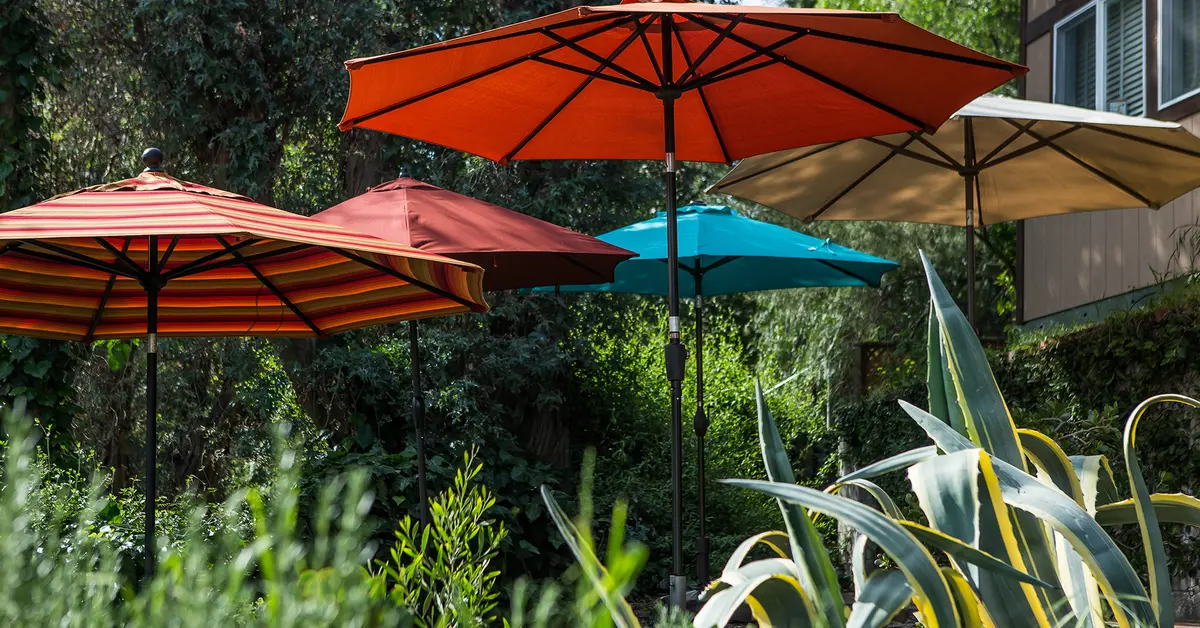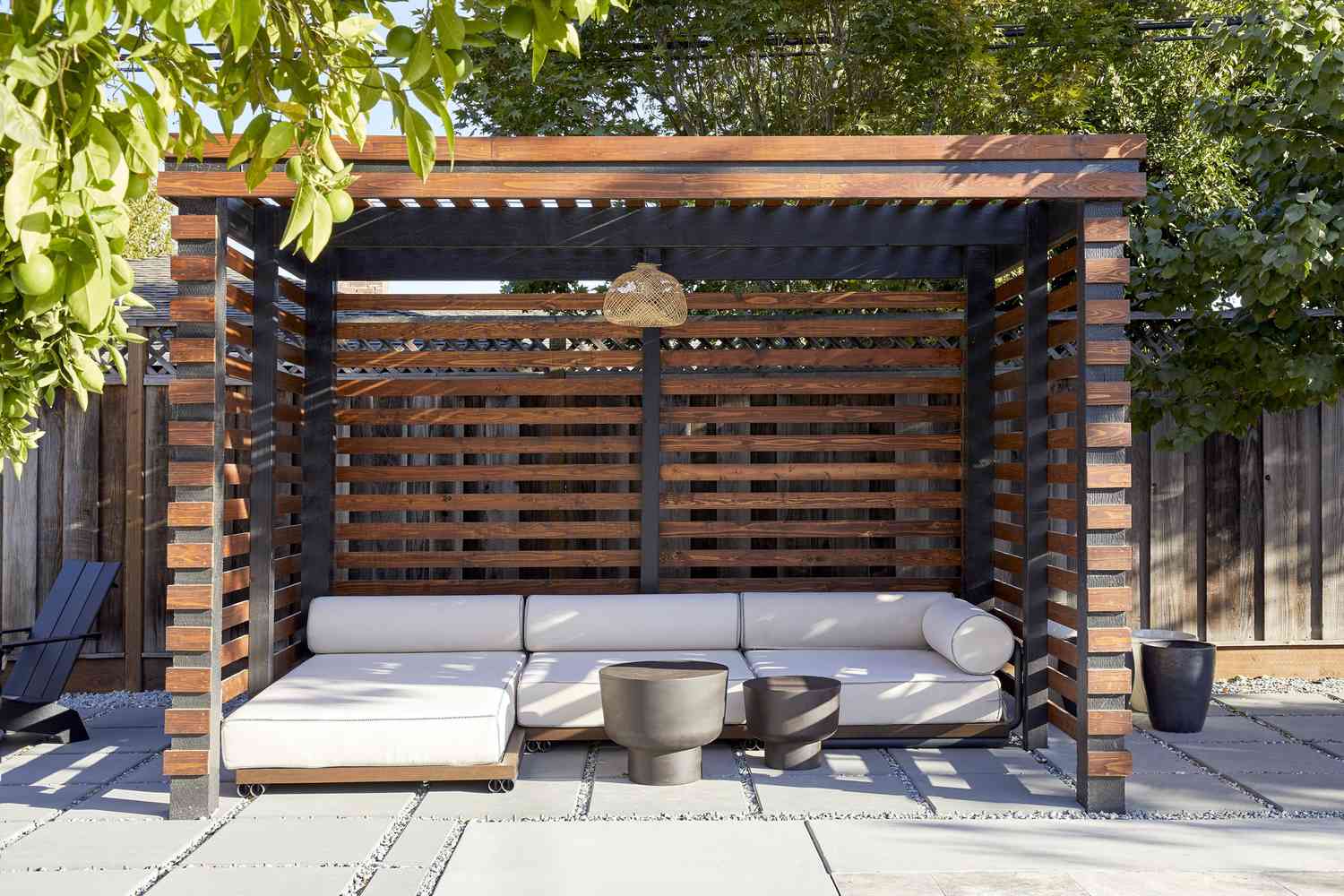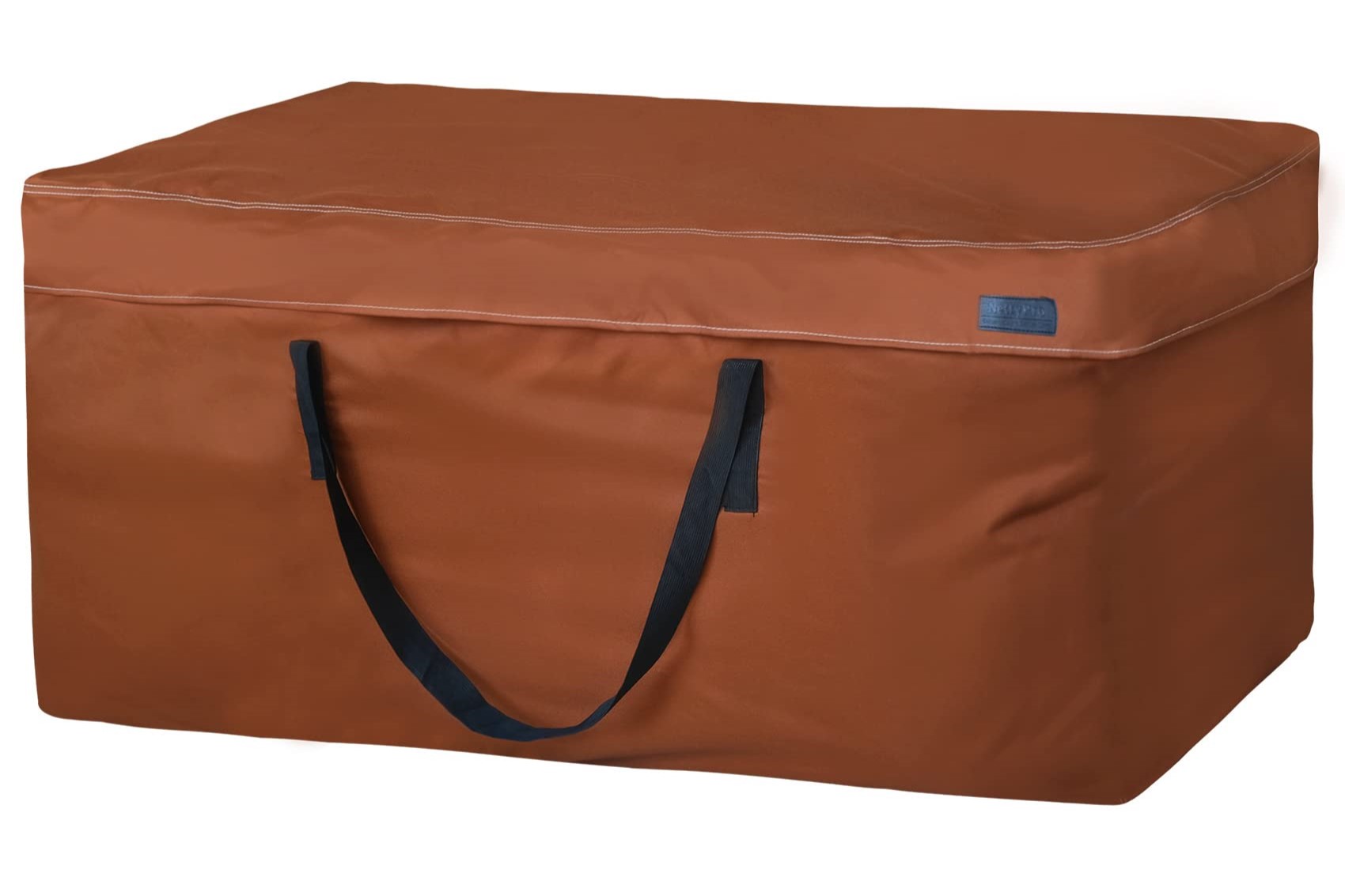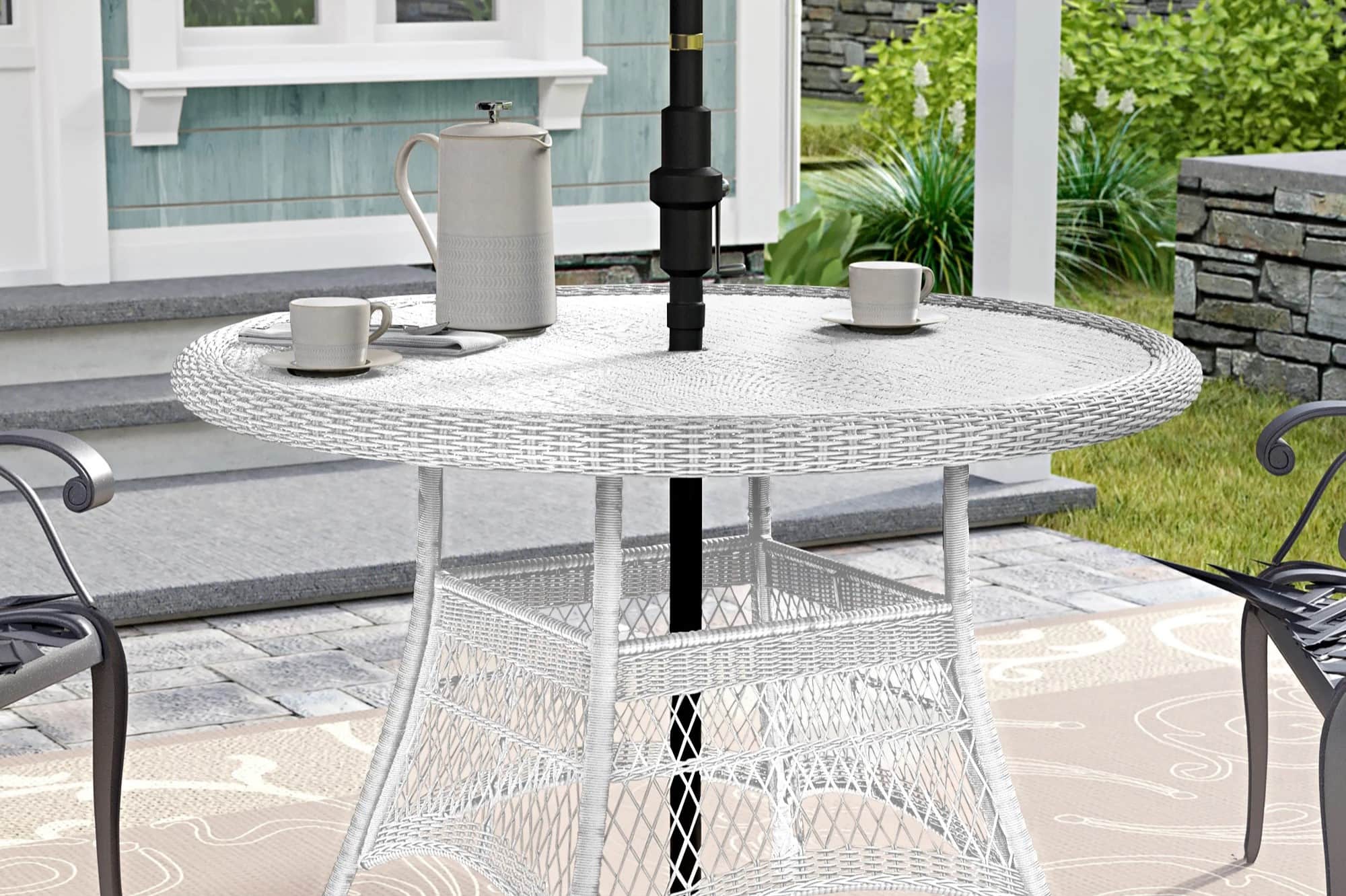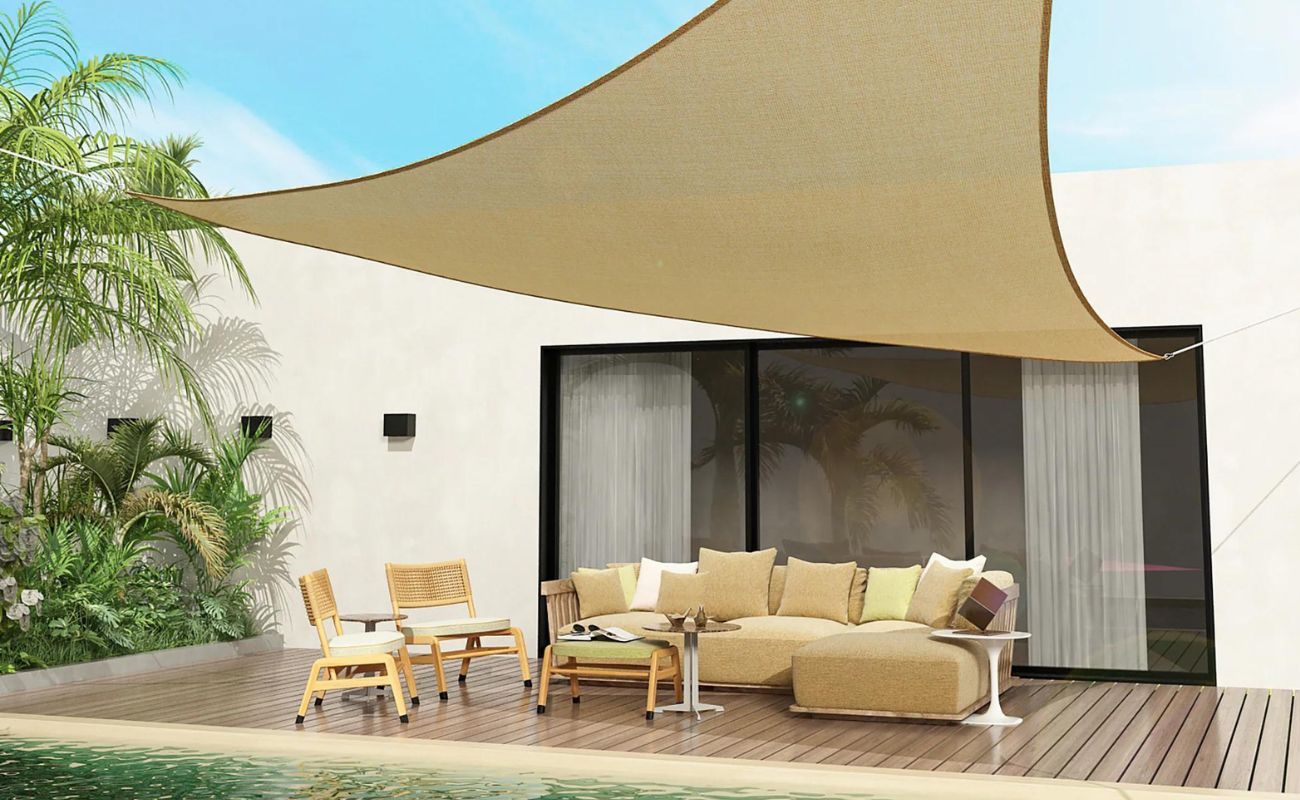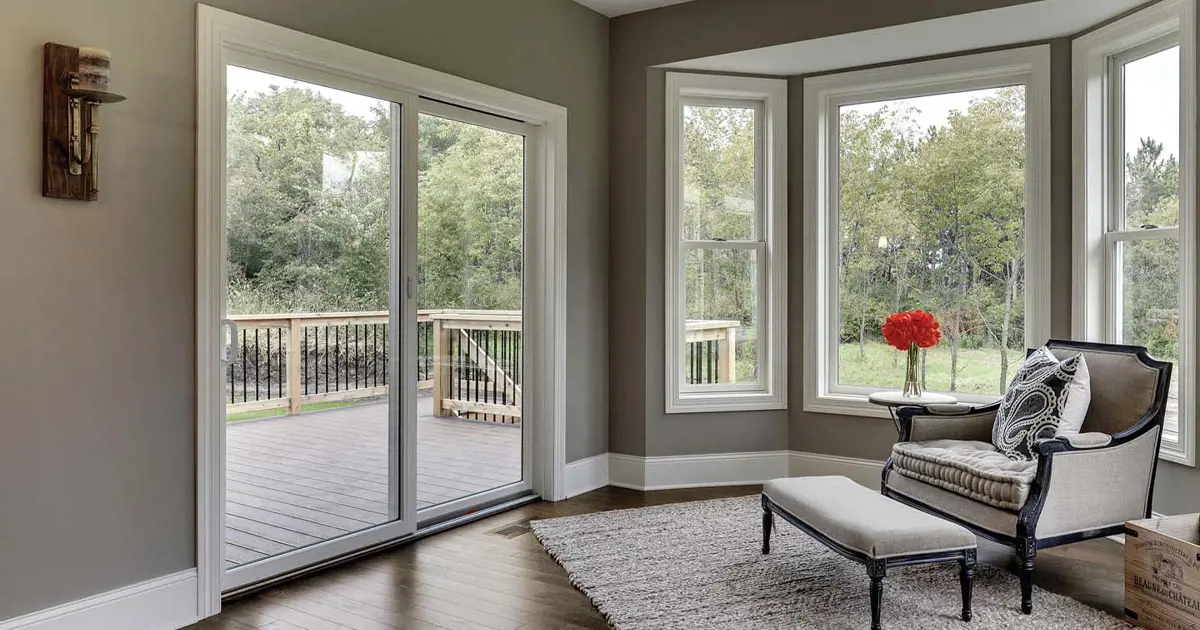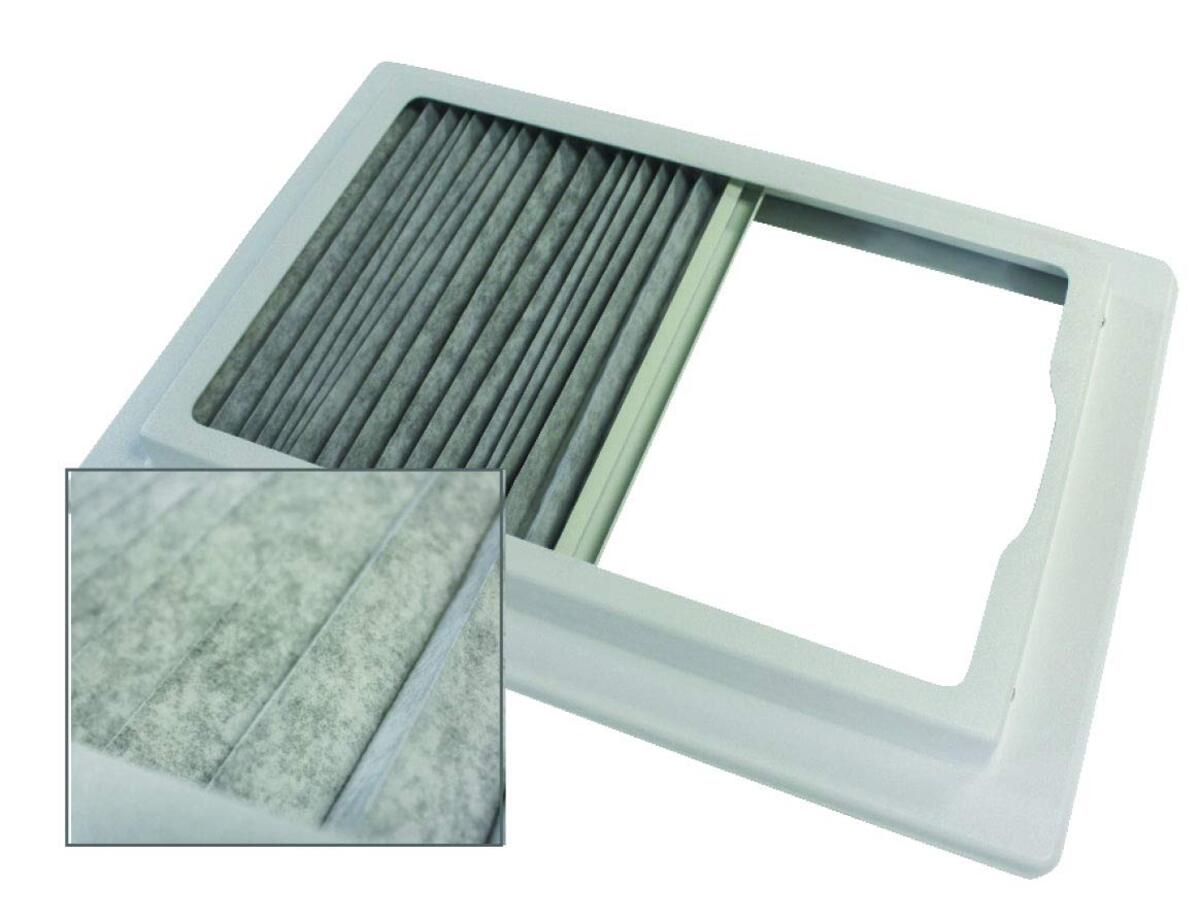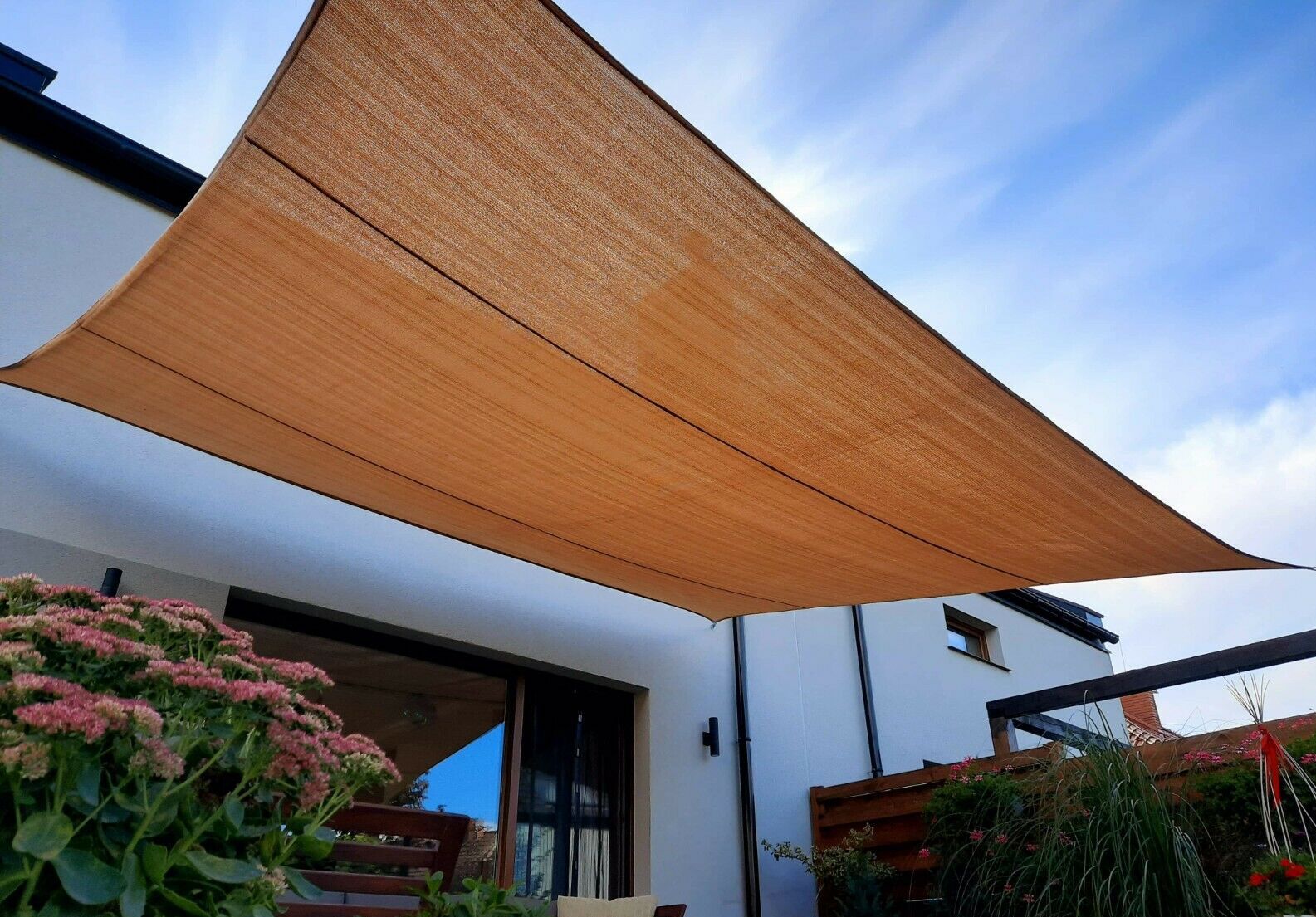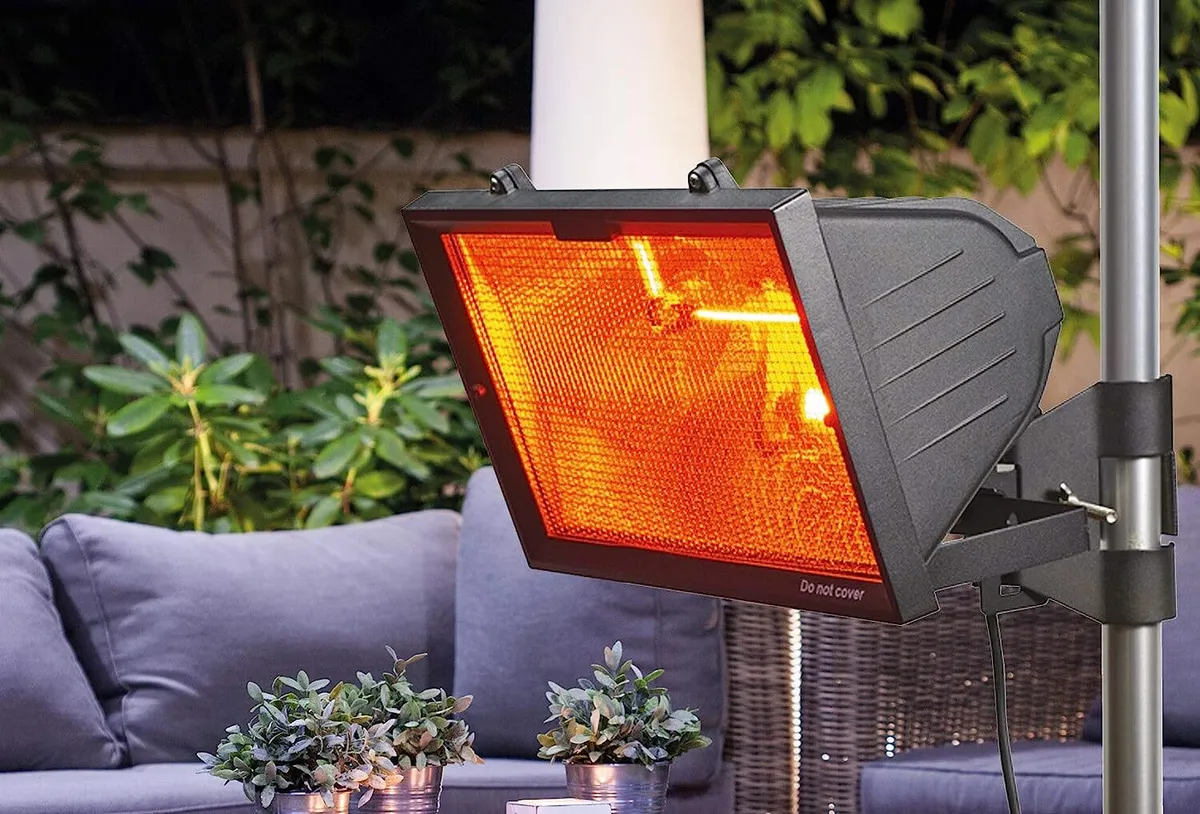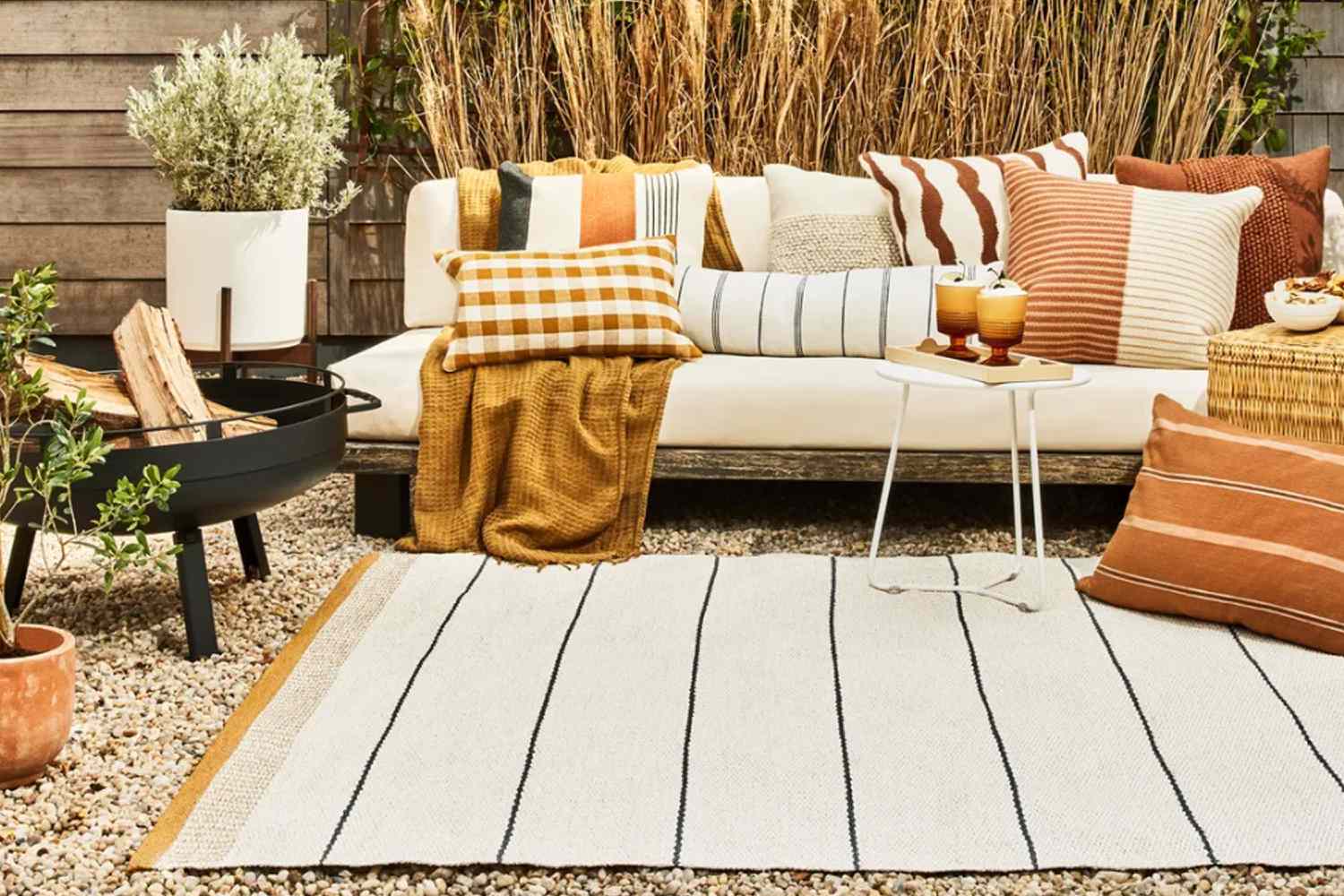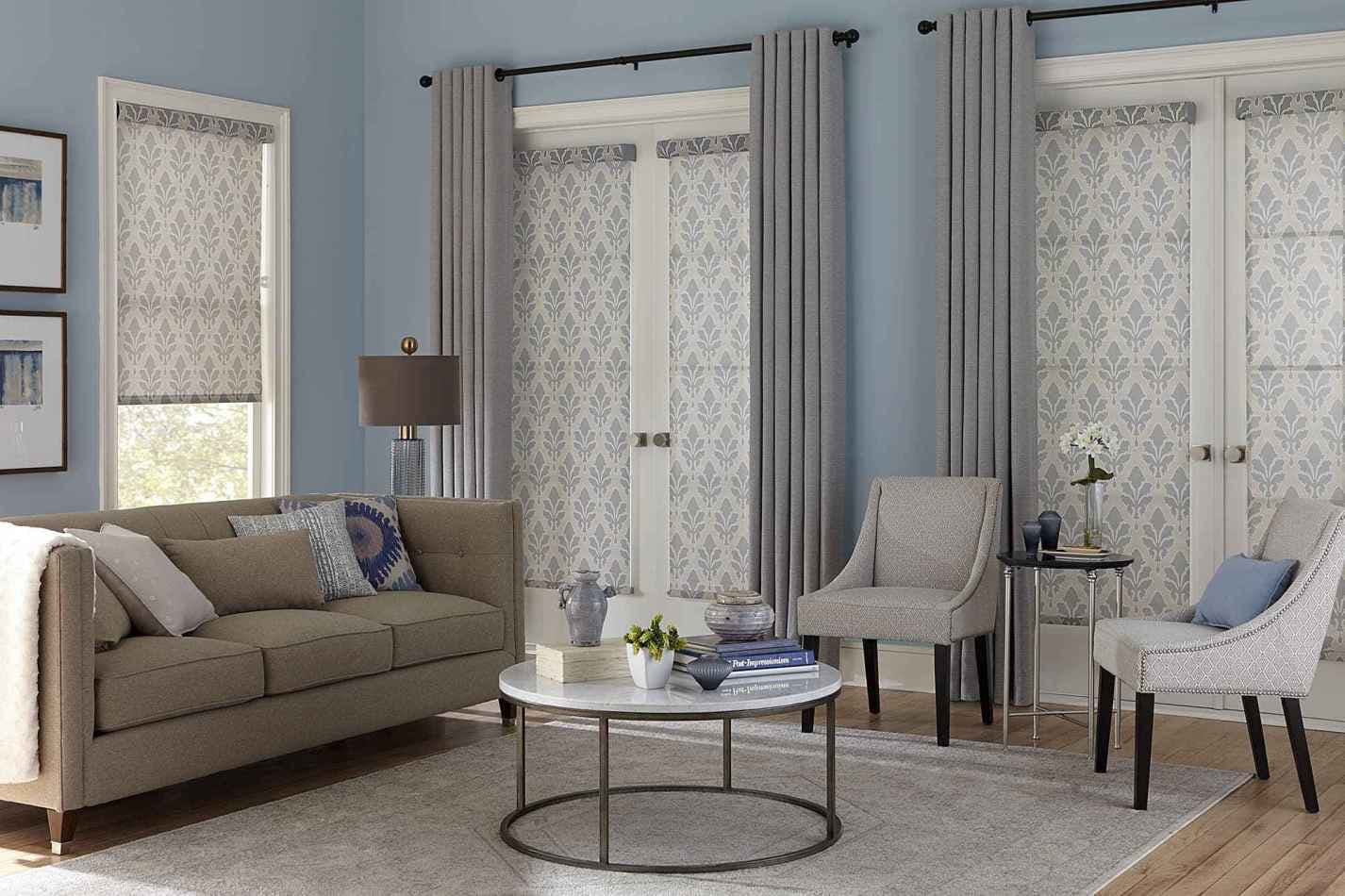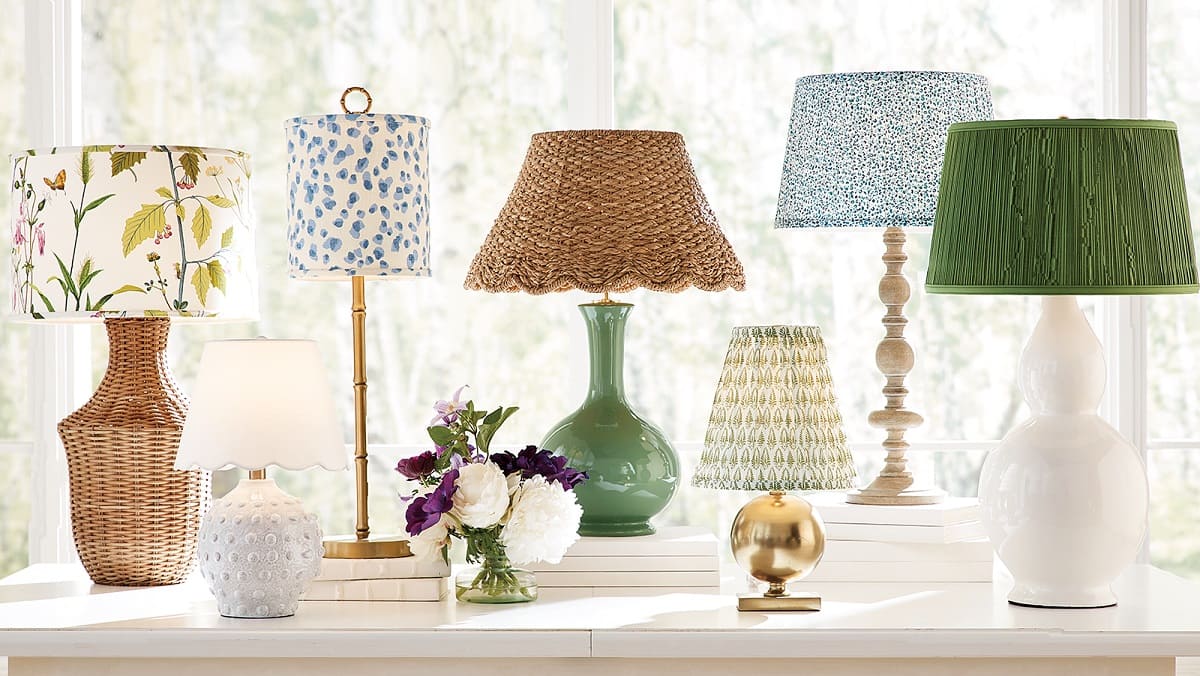Home>Gardening & Outdoor>Patio & Deck Designs>13 Amazing Patio Shade For 2024
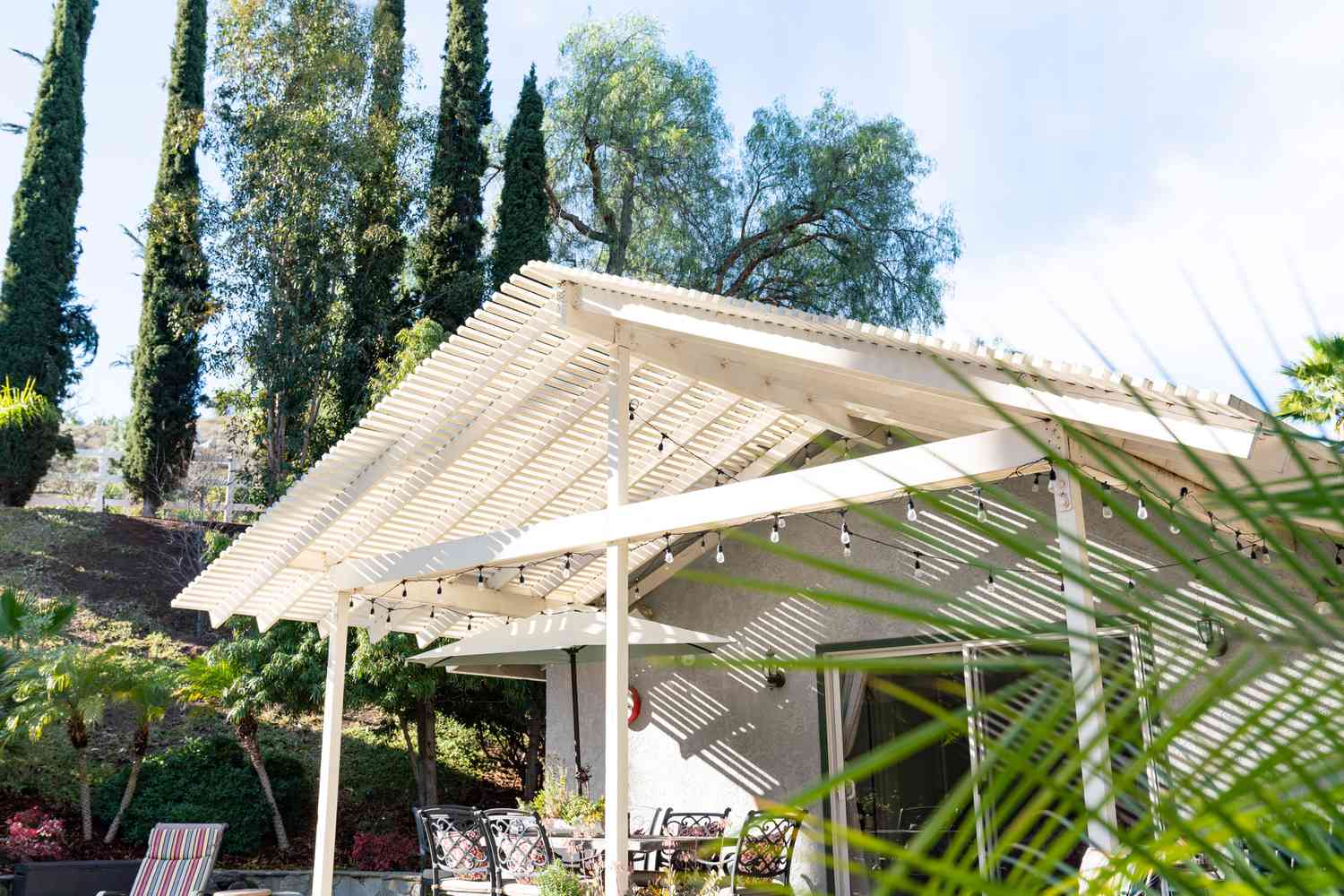

Patio & Deck Designs
13 Amazing Patio Shade For 2024
Modified: December 29, 2023
Discover the top 13 patio shade ideas for 2023 to create a cool and stylish outdoor retreat. Find the perfect shade solution for your patio today!
(Many of the links in this article redirect to a specific reviewed product. Your purchase of these products through affiliate links helps to generate commission for Storables.com, at no extra cost. Learn more)
Are you ready to transform your outdoor space into a comfortable and stylish oasis? Look no further than the 13 Amazing Patio Shade For 2023! Whether you're looking for a classic umbrella, a modern canopy, or a versatile pergola, this comprehensive list has something for every style and budget. Say goodbye to harsh sunlight and enjoy your patio year-round with these top-notch shade options.
Overall Score: 8/10
The Shade&Beyond 12' x 12' x 12' Sun Shade Sail Triangle is a high-quality shade sail designed to provide protection from UV rays and create a comfortable outdoor space. Made of durable fabric with stainless steel D-rings, it allows light and air to pass through while blocking harmful UV rays. The sail is easy to install and maintain, with a long lifespan. It's an ideal shade solution for various outdoor areas, such as patios, gardens, and pools.
Key Features
- High Quality Guarantee
- Breathable Material Design
- Easy to install and maintain
- Long Use Time
- Ideal Shade Solutions
Specifications
- Color: Sand
- Dimension: 144.00Lx144.00Wx0.01H
- Size: 12' x 12' x 12'
Pros
- Provides great coverage
- Durable and well-made
- Easy to install
Cons
- Triangle shape may not provide as much shade
The Shade&Beyond Sun Shade Sail Triangle offers high-quality UV protection and comfortable outdoor shading. While the triangle shape may not provide as much coverage as a rectangle, it is durable, easy to install, and ideal for various outdoor areas. Customers have praised its durability and performance, making it a great choice for those seeking reliable sunshade solutions.
Overall Score: 8/10
Create a cool and comfortable outdoor space with the Radiance Outdoor Roller Shades. These roll-up bamboo blinds not only provide light filtering capabilities but also offer privacy and add a touch of charm to your porch or patio. The shades are waterproof, ensuring durability and longevity. With easy installation, you can have your new roller shade up in minutes. The cocoa color adds a natural, rustic feel to your outdoor living area. Measuring 72" W x 72" L, these shades are the perfect size for windows or as a privacy screen. Customers have given these shades a rating of 4.3/5, praising their quality, affordability, and ease of installation.
Key Features
- LIGHT FILTERING – Diffuses sunlight for a cooler space
- PRIVACY – Creates a comfortable outdoor patio space
- WATERPROOF – Perfect for defining your outdoor area
- EASY INSTALLATION – Installs in minutes with included materials
- CHARMING – Adds a natural touch to outdoor living space
Specifications
- Color: Cocoa
- Dimension: 72.00Lx72.00Wx0.00H
- Size: 72 x 72
Pros
- Affordable
- Easy to install
- Provides privacy
- Filters sunlight
- Adds charm to outdoor space
Cons
- Reeds are fragile
- Some customers wished for a darker color
- Bottom closeout looks cheap
The Radiance Outdoor Roller Shades offer an affordable and stylish solution for creating a cooler and more private outdoor space. With their light filtering properties and waterproof design, these bamboo blinds are both functional and visually appealing. Installation is a breeze and the cocoa color adds a touch of rustic charm to any patio or porch. While the reeds may be fragile, taking care of them can prolong their lifespan. Overall, these shades provide great value for the price, earning a score of 8 out of 10 from customer reviews. Whether you want to enjoy a quiet morning coffee or host a gathering with friends, the Radiance Outdoor Roller Shades are a fantastic addition to any outdoor space.
Overall Score: 8/10
Create a cool and comfortable outdoor space with the Shade&Beyond Sun Shade Sail. This 6' x 10' sand-colored sail is made of high-quality, breathable material that allows light and breeze to pass through. It's easy to install and maintain, and comes with a 5-year warranty. The Shade&Beyond Sun Shade Sail is ideal for use over patios, gardens, pool areas, and more, providing up to 85% sun protection and blocking up to 98% of harmful UV rays.
Key Features
- High Quality Guarantee
- Breathable Material Design
- Easy to install and maintain
- Long Use Time
- Ideal Shade Solutions
Specifications
- Color: Sand
- Size: 6' x 10'
Pros
- High-quality and durable materials
- Easy to install and maintain
- Provides excellent shade and UV protection
Cons
- Not waterproof
- Shade cloth may shrink
The Shade&Beyond Sun Shade Sail is a cost-effective and stylish solution for creating a comfortable outdoor space. With its high-quality construction and effective sun protection, it’s a great choice for anyone looking to enhance their patio, garden, or pool area. Just keep in mind that it’s not waterproof and may experience some shrinkage over time.
Overall Score: 7/10
The Radiance Outdoor Roll-up Shades are a stylish and practical solution for creating a cool and private outdoor space. Made of durable PVC, these woodgrain window blinds are waterproof and easy to install. They provide light filtering to create a comfortable environment while adding a charming touch to your patio or porch. The 72" W x 72" L size ensures great coverage, and the smart fastener design eliminates the need for cords. However, some users noted that the manual rolling mechanism may not be ideal for long-term use, especially in extreme weather conditions.
Key Features
- LIGHT FILTERING – Diffuse sunlight for a cooler space
- PRIVACY – Create a comfortable outdoor space
- WATERPROOF – Ideal for outdoor use
- EASY INSTALLATION – Install in minutes
- CHARMING – Adds a natural touch to outdoor living
Specifications
- Color: Woodgrain
- Dimension: 73.00Lx4.00Wx4.00H
- Size: 72"W x 72"L
Pros
- Easy to install
- Light filtering and privacy
- Charming woodgrain design
Cons
- Manual rolling mechanism may not be durable
- Some users experienced bending in extreme heat
The Radiance Outdoor Roll-up Shades offer a stylish and convenient way to create a comfortable and private outdoor space. With their light filtering and waterproof features, these woodgrain blinds add a natural touch to your patio or porch. While the manual rolling mechanism and durability in extreme weather conditions may be concerns, the overall value and functionality make them a great choice for enhancing your outdoor living experience.
Overall Score: 8/10
The PHI VILLA Outdoor Roller Shade is an 8' (W) x 6' (H) patio shade designed for outdoor use. It provides up to 95% UV block, protecting you from harsh rays and glare while keeping you cool in the summer. The shade is made of unique knitted breathable fabric, ensuring weather resistance and longevity. It features easy chain operation with a child safety tension device and bottom rings to keep the shade in place on windy days. The package includes hardware and instructions for easy installation in just a few minutes.
Key Features
- Suitable for windows, decks, porches, pergolas, etc.
- Up to 95% UV block
- Breathable fabric, weather resistant
- Easy chain operation, child safety tension device
- Bottom rings for windy days
Specifications
- Color: Wheat
- Dimension: 96.00Lx4.00Wx0.01H
- Size: 8' x 6'
Pros
- Up to 95% UV block
- Breathable, weather resistant fabric
- Easy to install with included hardware and instructions
Cons
- Cheap-looking white plastic chain
- Plastic caps may not be durable
- No detailed instructions for installation
The PHI VILLA Outdoor Roller Shade offers excellent protection from UV rays and harsh glare. Its durability and ease of installation make it a great choice for outdoor use. However, the use of plastic materials could affect its long-term durability.
Overall Score: 8/10
The AsterOutdoor Sun Shade Sail is an ideal, durable and high-quality solution for providing shade over patios, lawns, gardens, backyards, and outdoor areas. It is designed to keep you cool in summer, offering 95% UV block. The sail is available in several sizes and colors, made of strong stitched seams and durable stainless steel D-rings, and comes with a 5-year warranty. Easy to clean and use, it provides a comfortable and stylish space for various outdoor activities.
Key Features
- Ideal Use – Offers shade over outdoor areas
- Durable Construction – Rectangle shape with curved sides
- High Quality – 100% High Density 185GSM Polyethylene fabric
- Easy to Use – Comes with attached ropes and instruction sheet
- Warranty – 5 year warranty under normal weather conditions
Specifications
- Color: Graphite
- Dimension: 240.00Lx192.00Wx0.10H
- Size: 16' x 20'
Pros
- Provides comfort in outdoor spaces
- Strong and durable construction
- Easy to clean and maintain
- Breathable fabric with 95% UV block
Cons
- Issues with sizing reported
- Some customers experienced tearing
The AsterOutdoor Sun Shade Sail provides an excellent solution for creating comfortable and stylish outdoor spaces, offering high-quality materials, durability, and ease of use. While some customers experienced issues with sizing and tearing, the majority of reviews highlight its effectiveness and durability, making it a highly recommended option for shade over various outdoor areas.
Overall Score: 8/10
The ABOSUN Outdoor Sun Shade Cloth is a versatile solution to keep yourself and outdoor amenities protected from harsh UV rays. This sun shade cloth offers 90% UV protection without sacrificing cool air breathability. Made with high-density polyethylene, this patio sun shade is frost-proof, moisture-resistant, and super durable for year-round protection. It comes with reinforced copper grommets, heavy-duty metal grommets and is designed to attach to outdoor decks, pergolas, or patio spaces. The ABOSUN sunshade cloth is available in various sizes from 6’ x 20’ to 12’ x 20’. Several customers have praised its quality and durability, although some have mentioned that it may interfere with air circulation in certain settings.
Key Features
- Premium Sun Shade Cover
- Multifunctional Overhead Cover
- Enhanced HDPE Resilience
- Reinforced Copper Grommets
- Versatile Application Sizes
Specifications
- Color: 1-wheat
- Dimension: 144.00Lx72.00Wx0.24H
- Size: 6×12 FT
Pros
- Offers 90% UV protection
- Durable and frost-proof material
- Reinforced grommets for easy hanging
Cons
- May interfere with air circulation
- Grommets may rust over time
The ABOSUN Outdoor Sun Shade Cloth is a durable and versatile solution to provide protection from the sun while maintaining air breathability. Although it may have some minor drawbacks, its quality and effectiveness make it a worthy addition to your outdoor spaces.
Overall Score: 7/10
The Coarbor Outdoor Roll up Shades Blinds for Porch Patio are perfect for providing privacy, shade, and UV protection for your outdoor and indoor spaces. Made with heavy-duty mesh fabric, these shades are easy to install and require no maintenance. The breathable fabric filters light and allows for air circulation, protecting your furniture from the elements. Customized sizes available for a perfect fit. Although some customers found it difficult to install, others were pleased with the performance and value of these roller shades.
Key Features
- 90% UV protection and visibility blockage
- Breathable and light filtering fabric
- Easy to install and maintenance free
- Customized size available
Specifications
- Color: Brown
- Dimension: 72.00Lx9.00Wx0.01H
- Size: 8'W x 6'H
Pros
- Provides great value for the money
- Blocks sun and offers privacy effectively
- Breathable fabric allows for air circulation
Cons
- Difficult to install for some users
- Edges are not finished as desired by some customers
- Instructions for installation may be unclear
The Coarbor Outdoor Roll up Shades Blinds for Porch Patio are a great addition to any outdoor space, offering both shade and privacy. While installation may be a bit challenging for some, the overall performance and value make these shades a worthwhile investment.
Overall Score: 8/10
The SHADE SPRING Outdoor Roller Shade is a high-quality, cordless roller shade designed to provide UV block protection, privacy, and comfort in outdoor and indoor spaces such as porches, gazebos, patios, decks, and balconies. Made of 185GSM polyethylene knitted fabric, this weather-resistant shade comes with a child-safe cordless operation and a 3-year warranty against UV degradation. Its easy installation, lightweight design, and effective sun-shading capabilities make it a cost-effective and aesthetically pleasing addition to any outdoor area.
Key Features
- Premium Material : Made of 100% new high-density permeable 185GSM polyethylene knitted fabric material
- Details : Height : 6 FT, Width : 4 FT, Up to 95% UV block protection
- Occassions : Perfect for porch, gazebo, patio, back yard, deck, balcony, pergolas
- Child Safe Cordless Operation : Easy cordless operation, no chains, with wand operate
- Build to last : 3-year warranty against UV degradation, offering 100% customer satisfaction service
Specifications
- Color: Gray
- Size: 8' x 6'
Pros
- Provides shade and UV protection
- Affordable and easy to install
- Effective and smooth operation
- Lightweight and aesthetic
Cons
- Plastic chain and plastic gears/sprockets
- May have shipping or quality issues
The SHADE SPRING Outdoor Roller Shade is a budget-friendly and functional solution for creating shade, privacy, and comfort in outdoor settings. Despite some minor quality concerns and potential shipping issues, its overall ease of use, effectiveness, and aesthetic appeal make it a worthwhile addition to any outdoor space.
Overall Score: 8/10
The VICLLAX 90% Shade Fabric Sun Shade Cloth Privacy Screen is the ideal solution for creating a cool, shaded space. The durable 200GSM HDPE material with knitted construction resists tearing and fraying, offering up to 90% UV block. This breathable shade fabric allows just enough light to provide privacy without completely blocking your view. Reinforced binding and double grommets on each corner reduce tearing and retain strength. With dimensions of 10x10FT, this mocha-colored shade cloth is perfect for use on a patio, pergola, lawn, or as a windbreak fence. The hassle-free installation includes a grommet every 2 ft, and the fabric can easily be cleaned with a garden hose.
Key Features
- Durable 200GSM HDPE material with knitted construction
- Up to 90% UV block with breathable shade fabric
- Reinforced binding and double grommets on each corner
- Ideal shade solution for patio, pergola, lawn, and more
- Hassle-free installation with grommet every 2 ft
Specifications
- Color: Mocha
- Dimension: 120.00Lx120.00Wx0.01H
- Size: 10X10FT
Pros
- Provides privacy without completely blocking the view
- Easy to clean with a garden hose
- Holds up to 40 mph winds
- Ideal shade solution for various outdoor areas
Cons
- Grommets may not be spaced as advertised
- Grommets can be stronger for heavy-duty use
The VICLLAX 90% Shade Fabric Sun Shade Cloth offers a durable and effective solution for creating a cool, shaded space with privacy. While it may have some limitations with grommet spacing, the overall quality and performance make it a valuable addition to any outdoor area.
Overall Score: 8/10
The SunnyRoyal Patio Shades are a versatile and durable option that provide not only privacy, but also protection from the sun's harmful UV rays. These roll up blinds are easy to assemble and clean, and can be used in a variety of outdoor locations. They come with a 3-year warranty and are available in custom sizes. Plus, the 220 gsm breathable fabric ensures long-lasting quality.
Key Features
- PREMIUM QUALITY: 220 gsm breathable fabric
- UV PROTECTION: Blocks harmful UV rays
- ASSEMBLE & CLEAN: Easy to assemble and wash
- WIDE USE: Ideal for garden, porch, patio, and more
- CUSTOMER SERVICE: 3-year warranty included
Specifications
- Color: Brown
- Size: 8'W x 6'L
Pros
- Provides UV protection
- Versatile and easy to install
- Breathable fabric for lasting quality
Cons
- Sizing discrepancies reported
- Some installation difficulties
The SunnyRoyal Patio Shades are a great choice for anyone looking to enhance their outdoor space. With their UV protection, easy assembly, and versatile use, they provide both practicality and style. Despite some reported sizing and installation issues, the overall quality and value make these roll up blinds a solid investment.
Overall Score: 8/10
The HENG FENG Outdoor Roller Shade Cordless is a versatile and practical solution for creating shade and privacy in your outdoor spaces. Made of high-density polyethylene material, this roller shade is designed to be breathable and weather-resistant. It blocks up to 90% of harmful UV rays, keeping you protected and reducing heat. The cordless design ensures it's safe for children, with easy operation using a wand. Windproof accessories prevent the shade from swinging, making it ideal for windows, patios, porches, gazebos, decks, and more. Installation is easy, and the all-aluminum tube ensures durability. With its brown color and cordless design, this roller shade offers both functionality and style.
Key Features
- Breathable material made of high-density polyethylene
- UV blocking fabric for privacy and protection
- Child-safe cordless design with windproof accessories
- Suitable for various outdoor spaces
- Easy installation and cleaning
Specifications
- Color: Brown
- Dimension: 72.00Lx48.00Wx0.01H
- Size: Cordless 6’X6’
Pros
- Breathable and weather-resistant fabric
- Blocks up to 90% of harmful UV rays
- Safe and easy cordless operation
- Ideal for various outdoor spaces
- Durable all-aluminum tube
Cons
- Anchor end caps may pop off in slight breeze
- Plastic pole across the bottom may warp
The HENG FENG Outdoor Roller Shade Cordless is a versatile and well-designed product that offers both shade and privacy in your outdoor spaces. Its breathable and weather-resistant fabric ensures durability and functionality. With its easy installation and child-safe cordless design, it’s a convenient solution for any outdoor area. While some customers have experienced issues with the anchor end caps and the plastic pole warping, overall, this roller shade provides excellent value for its price. Whether you need shade for your porch, gazebo, or deck, this roller shade is a reliable choice.
Overall Score: 8/10
The PHI VILLA Aluminum Patio Shades Roll Up Outdoor Sun Shade Roller is a durable and easy-to-install solution for providing shade in your outdoor space. Made of high-density permeable fabric, it is breathable and weather resistant. The unique design includes easy chain operation and safety tension to keep the shade steady, making it perfect for outdoor use. It comes with a 3-year warranty and professional service.
Key Features
- Breathable & durable 185GSM fabric
- Easy installation & maintenance
- Unique design with child safety tension
- Suitable for wide range of outdoor spaces
- Professional service with 3-year warranty
Specifications
- Color: Wheat
- Dimension: 94.49Lx94.49Wx0.01H
- Size: 8ftx8ft
Pros
- Breathable and weather resistant fabric
- Easy to install and operate
- Sturdy and durable design
- Professional service and warranty
Cons
- Some issues with hardware quality
- Could benefit from additional installation accessories
The PHI VILLA Aluminum Patio Shades Roll Up Outdoor Sun Shade Roller is a highly functional and durable addition to any outdoor space. Despite some minor hardware issues, the overall quality, ease of use, and professional service make it a solid choice for providing shade and privacy. With its breathable fabric and sturdy design, it offers great value for money and practical functionality, making it an excellent option for those looking to enhance their outdoor environment.
Buyer's Guide: Patio Shade
Read also: 12 Amazing Patio Covers For Shade For 2024
Types of Patio Shades
- Umbrellas: versatile, easily adjustable, and come in various sizes and styles.
- Retractable Awnings: provide adjustable coverage while maximizing outdoor space.
- Pergolas: offer a stylish and permanent shade solution that can also support climbing plants.
- Canopies: temporary and versatile, available in a wide range of styles and materials.
Considerations for Choosing Patio Shade
- Size: consider the size of your patio and the area you want to cover.
- Material: choose a durable and weather-resistant material suitable for your climate.
- Style: align the style of the shade with your patio's aesthetic and your personal taste.
- Installation: consider whether you want a permanent or temporary shade solution.
Maintenance and Care
- Regular Cleaning: follow the manufacturer's instructions for cleaning to keep your patio shade looking its best.
- Weather Protection: consider investing in covers or protective measures to prolong the life of your patio shade.
- Repairs: be prepared to handle minor repairs such as tightening screws or replacing fabric as needed.
Budget-Friendly Options
- DIY Solutions: consider utilizing existing structures or creating your own shade with budget-friendly materials.
- Secondhand Options: explore local online marketplaces or thrift stores for affordable pre-owned patio shade solutions.
- Seasonal Sales: keep an eye on seasonal sales and promotions to score a deal on patio shade options.
Additional Features to Consider
- UV Protection: look for shade options with UV-resistant materials for added protection.
- Adjustability: consider shades that can be easily adjusted to accommodate changing sunlight and weather conditions.
- Wind Resistance: if you live in a windy area, choose a shade solution that can withstand strong winds.
- Heat Reflection: some materials are designed to reflect heat, keeping the shaded area cooler.
Frequently Asked Questions about 13 Amazing Patio Shade For 2024
Measure the area you want to cover and consider the dimensions of the shade options available to ensure a proper fit.
Yes, some patio shades are designed to be weather-resistant and can withstand rain, wind, and sun exposure.
It depends on the complexity of the installation and your comfort level with DIY projects. Some options may require professional installation.
Follow the manufacturer’s instructions for cleaning and maintenance. Regularly remove debris and consider weather protection measures.
Yes, you can find patio shades made from sustainable and eco-friendly materials such as bamboo, recycled fabric, or PVC-free options.
Was this page helpful?
Trust Storables.com for unbiased and honest product reviews. Our reviews are rigorously assessed by our Expert Board Contributors and adhere to strict Editorial Standards. We ensure that each review is transparent and trustworthy, helping you make informed purchasing decisions.
